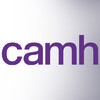
Contingency Management of Alcohol Abuse in the Severely Mentally ILL
Alcohol AbuseSchizophrenia2 moreThe investigators will evaluate the efficacy of a comprehensive 12-week contingency management intervention for treating alcohol dependence for persons with severe mental illness who are seen within the context of a community mental health center setting. The primary contingency will be submission of alcohol-free urines. Additional reinforcers will be provided for intensive outpatient addiction treatment attendance. Reinforcers will be vouchers or actual items useful for day-to-day living. Participants will be 120 adults diagnosed with alcohol dependance and severe mental illness.

Major Depressive Disorder - Understanding The Link Between The Brain And The Heart
Major Depressive DisorderThere is strong evidence that patients with major depressive disorder (MDD) have an increased risk of developing coronary heart disease (CHD). This elevated risk is independent of standard risk factors such as smoking, obesity, high cholesterol, diabetes, and high blood pressure. The relative risk of developing CHD is proportional to the severity of depression (the more severe the depression, the more likely the development of CHD). The sympathetic nervous system (the part of your nervous system that makes your heart beat harder and faster) is responsible for our "flight and fight" response to a threatening situation. It has been determined that increased sympathetic nervous system activation occurs in approximately one in three untreated patients with MDD (with no underlying CHD). There is growing evidence linking elevated sympathetic activity to early stages of kidney dysfunction and an increased incidence of cardiovascular (heart and blood vessel) disease development (eg, heart attacks). Sympathetic nervous system activation over a prolonged period of time may also be associated with abnormal blood pressure regulation and the development of insulin resistance (an important feature of type 2 diabetes). It has been suggested that a certain gene, known as the serotonin transporter (5-HTT) gene, may be involved. In particular, work from our group indicates that a particular type of this gene, the short form (or "short" allele) may be important in linking MDD, sympathetic nervous activation, and increased cardiac risk. This study aims to examine the role of the 5-HTT gene on cardiovascular risk factors associated with elevated sympathetic activity in patients with MDD. Additionally, the study will examine the effect of serotonin re-uptake inhibitor (SSRI) therapy on these parameters. A clearer understanding of these systems and processes will allow for identification of patients with increased cardiac risk and development of risk reduction strategies. Such information is clinically significant given the link between cardiovascular disease and MDD. Hypothesis 1: That MDD patients carrying the s allele of the 5-HTT transporter have higher sympathetic activity than homozygous ll patients. Hypothesis 2: that MDD patients with elevated sympathetic activity display early signs of left ventricular hypertrophy (LVH) and diastolic dysfunction. Hypothesis 3: That MDD patients with high sympathetic activity have greater morning surges in blood pressure than patients with normal sympathetic activity. Hypothesis 4: That MDD patients with elevated sympathetic activity display early signs of insulin resistance. Hypothesis 5: That SSRI therapy, in particular in those who carry the s allele of the 5-HTT, has a favourable effect on blood pressure variability and morning surge in blood pressure, sympathetic stress reactivity, and markers of insulin resistance.

Transcranial Laser Therapy for Major Depressive Disorder
Major Depressive DisorderThe purpose of this study is to see if using Transcranial LED Therapy (TLT) using the PhotoMedex's Omnilux NEw-U LED helps improve symptoms of major depressive disorder (MDD). TLT works by briefly delivering near-infrared (non-visible) radiations to the forehead. The radiations penetrate the brain and stimulate the cells & metabolism. Our goals are To assess the antidepressant effect of the TLT in depressed subjects. To assess the safety and tolerability of the TLT in depressed subjects To assess the acceptability of the TLT in depressed subjects To pilot test the impact on cognition of the TLT in depressed subjects (Ancillary Study)

Estimate the Efficiency of the Association of an Injection of Ketamine and the Venlafaxine in the...
Major Depressive DisorderThe objective of this study is to evaluate the effectiveness of ketamine (infusion of 0.5mg/kg) and venlafaxine compared to the use of venlafaxine alone in the treatment of major depression (MADRS score ≥ 20 ) to six weeks of treatment.

Changes in Cerebral Glucose Metabolism After Electroconvulsive Therapy (ECT)
Major Depressive DisorderThere exist already a few studies that have measured changes of brain metabolism pre and post Electroconvulsive Therapy (ECT) by Positron emission tomography (PET) but these were all performed in a small number of patients and used different methodologies. It is therefore not surprising that these investigations provided inconsistent results, as reviewed previously {{23 Schmidt,E.Z. 2008}}. In patients with treatment-refractory major depressive episodes, the investigators here therefore probed (a) whether changes in cerebral glucose metabolism measured by PET occur after treatment with ECT and (b) whether these correlate with the clinical amelioration of symptoms. To pursue this goal, the investigators assessed clinical effects, neurocognitive function, and brain metabolism using 18F-Fluoro-deoxyglucose (18F-FDG) PET at baseline and at the end of treatment. Patients with a treatment refractory depression - defined as absent clinical improvement of depressive symptoms after at least two trials with antidepressants from different pharmacologic classes adequate in dose, duration of at least 6 weeks, and compliance {{30 Berlim,M.T. 2007}} - in whom ECT had been intended on clinical grounds were consecutively asked for participation in this study. Patients had to be between 18 and 80 years old and to be physically healthy.

Creatine as a Treatment Option for Depression in Methamphetamine Using Females
DepressionSubstance Abuse3 moreMethamphetamine (MA) is a psychostimulant drug with high abuse potential. MA can be smoked, snorted, injected or ingested orally to produce a release of high levels of dopamine into the brain and reduction of dopamine uptake. Its use results in feelings of pleasure, increased energy, and greater alertness lasting up to 12 hours. In 2010, the National Survey on Drug Use and Health reported that 353,000 Americans aged 12 or older reported being current MA users. Over the past decade MA use rates have fluctuated with current use rates on the decline; however, importantly, even though overall use rates are declining, use rates among males and females are approaching equal proportions. This use rate pattern is unlike other drugs of abuse, which typically demonstrate males using more than females. In some states, more females than males consider MA as their drug of choice. Namely, in a 2010 report in the state of Utah, more females were diagnosed with MA as a primary substance of abuse than males upon admission to treatment. Depression and MA use are highly comorbid. The relationship between MA use and depression is likely bidirectional, with MA use causing changes in mood and being used as a self-medicating behavior to reduce symptoms of depression. Several studies have shown that depression rates are higher in MA-using females compared to their male counterparts. It is likely that neurobiological and psychosocial mechanisms contribute to increased incidence of depressive symptoms in females. No clear treatment model exists to suggest how the comorbidity of depression and MA use is best managed. In studies of antidepressants for treatment of MA withdrawal and dependence, findings have suggested that antidepressants are ineffective for treating depressive symptoms. Creatine is an organic acid occurring naturally in vertebrates, where it takes part in energy homeostasis in tissues with fluctuating energy demands. Exogenous creatine has been shown to increase brain concentrations of PCr. Neuroimaging studies of creatine have shown increased brain phosphocreatine (PCr) content with creatine administration. Therefore, we hypothesize that oral creatine administration will increase PCr levels and reduce depressive symptoms in a sample of depressed female MA users. This hypothesis will be tested by a within subjects design by giving depressed MA using females oral creatine for eight weeks and measuring PCr pre- and post-treatment with magnetic resonance spectroscopy. Moreover, depressive symptoms will be measured by administration of the Hamilton Depression Rating Scale twice weekly during the course of creatine treatment.

Efficacy of Lu AA21004 on Cognitive Dysfunction in Major Depressive Disorder
Depressive DisorderMajorThe purpose of this study is to evaluate the effects of Lu AA21004, once daily (QD), on cognitive dysfunction in patients with major depressive disorder.

To Enhance Cognition in Late Life Depression Using Transcranial Direct Current Stimulation
CognitionDepressionLate Life Depression (LLD) is a serious health problem which not only causes depressed mood but also results in impairments in memory and attention. These impairments are likely to be resistant to treatment, which increases the chances of developing dementia even after successful treatment of mood.This study is a randomized controlled trial of transcranial Direct Current Stimulation (tDCS) in people with LLD to enhance their cognition after successful treatment of mood with established medications. tDCS is non invasive, relatively inexpensive and portable, and has been found to be safe.This study also serves as a pilot study to assess the effects of tDCS on cognition and neurophysiologic markers of cognition among patients with LLD. Primary study hypothesis is that participants Participants randomized to tDCS will perform better on a working memory task 2 weeks and 3 months following the tDCS course.

Deep-brain Magnetic Stimulation (DMS) in the Treatment of Major Depressive Disorder
Major Depressive DisorderTranscranial magnetic stimulation (TMS) is an effective alternative for pharmacotherapy in major depressive disorder, but the effectiveness is not clear due to stimulated region, frequency and intensity of magnet field. Standard TMS techniques only can stimulate superficial cortical areas as the electric field decreases rapidly as a function of tissue depth,while depression is also interconnected with deeper neuronal regions. Deep-brain magnetic stimulation (DSM, or deep TMS, DTMS) allows stimulation of deeper cortical regions. Previous research has demonstrated that alpha frequency (8-13 Hz) EEG activity may have particular relevance to the response to antidepressants, and reduction of alpha frequency (8-13 Hz) could lead to negative symptoms. It has been reported that both alpha frequency and low-field magnetic stimulation could improve depressive symptoms. The objective of this study is to compare the effectiveness of the two different parameters of DMS in the treatment of major depressive disorder. The changes of brain derived neurotropic factor (BDNF) are also investigated to make a relevant analysis of the improvement of depressive symptoms.

The ISLAND Study: InSuLa Assessed Needs for Depression
DepressionWhile there are many effective options for treating a major depressive episode, there are no clinical markers that predict the likelihood of remission with an initial trial of either an antidepressant medication or psychotherapy. The goal of this study is to test how brain function changes in depress patients treated with cognitive behavioral therapy (CBT) compared to patients treated with a selective serotonin reuptake inhibitor (SSRI, either escitalopram or sertraline), which are FDA approved antidepressants. The study aims to determine if bran scan findings might help physicians to select the most effective antidepressant treatment for an individual patient. Up to 100 male and female outpatients who are between 21-55 years old will be enrolled. Participation in the study will last from 14-26 weeks. Subjects will be randomized to receive either escitalopram (s-CIT) or CBT for 12 weeks. Resting-state positron emission tomography (PET) and BOLD functional magnetic resonance imaging (fMRI) scans will be done before the treatment begins, and again at the end of treatment (week 12). Non-responders to s-cIT or CBT will be crossed over to receive an additional 12 weeks of treatment with the alternative intervention.
